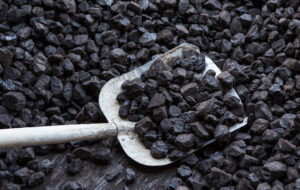
“DTEK Energo plans to import about 210,000 tons of coal from Poland for more reliable passage of the autumn-winter period by thermal generation, the energy holding company said in a press release on Wednesday.
Under the fuel import contract, an agreement has been reached on the supply of thermal coal throughout the heating season, starting from September 2023 and until March 2024.
As the company noted, the first coal shipments are expected as early as this week.
“In the conditions of war, unpredictable actions of the enemy and the increased load that the company’s thermal power plants have been carrying in recent months, additional volumes of imported fuel will allow to “back up” and provide an additional margin of safety for a more stable passage of the nearest heating season by thermal generation,” said Ildar Saleev, CEO of DTEK Energo, quoted in the press release.
As reported, DTEK Energy’s thermal power plants have increased their electricity output by 28% over the last four months compared to the same period last year. In turn, in August, when consumption was at record highs for the summer due to the heat wave, power engineers generated 35% more electricity than in August 2022.
In just eight months of this year, DTEK Energy’s thermal power plants supplied almost 9.9 bln kWh of electricity, which is equivalent to the average consumption of about 3.3 mln households during the year.

PJSC “Centrenergo” plans to import coal to pass the fall-winter period of 2023/2024, General Director Andriy Churkin said.
“Completely on our own coal we will not pass this winter. And in the near future, Centrenergo plans to sign contracts with foreign companies. There are already certain developments, I think that within a month there will be a result. We need to reach a volume of at least 80 thousand tons of coal per month,” he said in an interview with Interfax-Ukraine.
According to him, this would be a sufficient reserve, but the company is also preparing to work on gas and fuel oil.
“At Tripilska TPP, for example, there is an opportunity to work on fuel oil. We have already imported it, and I have already asked the technical directorate of the plant to make a trial run on this type of fuel,” Churkin said.
He specified that “the closest and most accessible for us is coal from Poland,” while the company buys fuel oil from PJSC Ukrnafta.

The Cabinet of Ministers of Ukraine allowed the export of 100 thousand tons of coal, which is planned to be delivered to Poland.
Taras Melnichuk, a representative of the Cabinet of Ministers in the Verkhovna Rada, said on Telegram that a corresponding change was made at a government meeting on Friday in the list of goods whose exports and imports will be subject to licensing, and quotas for 2022.
Earlier, Prime Minister Denys Shmyhal said that at the request of the Polish side, Ukraine is ready to consider the possibility of opening a quota for the export of 100,000 tons of coal.
He specified that coal reserves in the warehouses of Ukrainian power plants amount to almost 2 million tons, which is 2.5 times more than a year ago. “Therefore, we are ready to lend a shoulder of support to our Polish friends,” he stressed.
As reported, since mid-June 2022, Ukraine has set zero quotas for the export of all types of coal, except for coking coal, and on September 7, it completely banned the export of Ukrainian coal.
According to the State Customs Service, Ukraine’s coal exports for eight months of 2022 amounted to 523.863 thousand tons for $166.667 million, incl. to Slovakia – by $108.295 million, Poland – by $35.028 million, Hungary – by $20.779 million, other countries – by $2.565 million.

Ukraine will consider the possibility of opening a quota for the export of 100,000 tons of coal to Poland in September, Prime Minister Denys Shmygal said.
“On behalf of the President of Ukraine, at the request of the Polish side, Ukraine is ready to consider the possibility of opening quotas for coal exports to Poland. We are talking about 100,000 tons in September, which are now critically needed by our Polish partners,” he wrote on his Telegram channel.
Shmyhal specified that coal reserves in the warehouses of Ukrainian power plants amount to almost 2 million tons, which is 2.5 times more than a year ago. “Therefore, we are ready to lend a shoulder of support to our Polish friends,” he stressed.
The Prime Minister of Ukraine added that during the visit of his Polish counterpart Mateusz Morawiecki to Kyiv, the parties also discussed the restoration and commissioning of the Khmelnytsky NPP-Rzeszow power line.
“We planned to finish before December 14, but thanks to the acceleration of work, we can complete a week earlier. This will allow us to export an additional 1,000 MW to Poland. For our part, we ask Poland to assist in expanding export quotas within the framework of ENTSO-E,” Shmyhal said.
According to him, Ukraine expects that by the end of 2022 the amount of available transmission capacity in the direction of Slovakia, Romania and Hungary will increase from 300 MW by another 200-300 MW, and in the direction of Poland – over 1000 MW.
As reported, since mid-June 2022, Ukraine has set zero quotas for the export of all types of coal, except for coking coal, and on September 7, it completely banned the export of Ukrainian coal.
According to the State Customs Service, Ukraine’s coal exports for seven months of 2022 amounted to 450.6 thousand tons for $145.917 million, incl. to Slovakia – by $93.349 million, Poland – by $34.084 million, Hungary – by $15.919 million, other countries – by $2.565 million.

At a meeting on Wednesday, the Cabinet of Ministers completely banned the export of Ukrainian coal, Taras Melnychuk, a representative of the government in the Verkhovna Rada, said in his Telegram channel.
“Changes have been made to the volume of quotas for goods whose export is subject to licensing, approved by Resolution of the Cabinet of Ministers of December 29, 2021 No. 1424, in terms of a complete ban on the export of coal of Ukrainian origin,” Melnychuk wrote.
Earlier, the Cabinet of Ministers, by Resolution No. 666 of June 10, 2022, made similar changes to Resolution No. 1424 of December 29, 2021, setting zero quotas and thereby banning the export of natural gas, fuel oil, as well as hard coal, anthracite, briquettes, pellets and similar types of solid fuels obtained from hard coal, except for coking coal.
According to the State Customs Service, since the beginning of 2022, Ukraine’s coal exports amounted to 450.6 thousand tons for $145.917 million, incl. to Slovakia – by $93.349 million, Poland – by $34.084 million, Hungary – by $15.919 million, other countries – by $2.565 million.
In January-July 2021, exports amounted to 0.2 thousand tons for $0.025 million.